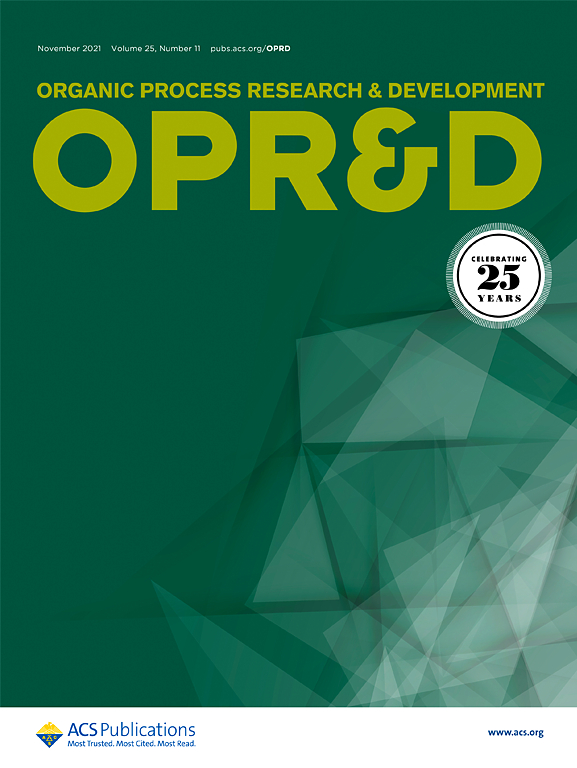流动反应器级联中伪伸缩光诱导α-氨基酸同源性的研究
IF 3.5
3区 化学
Q2 CHEMISTRY, APPLIED
引用次数: 0
摘要
我们提出了一个有效的,假伸缩合成通过α-氨基酸的Arndt-Eistert同源使用流动反应器级联。我们的系统利用流动生成重氮甲烷、重氮酮制备和随后的光流Wolff重排,无需中间隔离。这种创新的方法提高了安全性,提高了可扩展性,并允许访问以前在热/催化Wolff重排中不可用的基板。值得注意的是,反应条件温和,产率高,纯度高,从而扩大了Wolff重排的合成用途。这项工作揭示了一种多功能和可扩展的β-氨基酸合成方法,开辟了新的合成和药物化学途径。本文章由计算机程序翻译,如有差异,请以英文原文为准。

Up-Scale Pseudotelescopic Photoinduced Arndt-Eistert α-Amino Acid Homologation in a Flow Reactor Cascade
We present an efficient, pseudotelescopic synthesis of β-amino acids via the Arndt-Eistert homologation of α-amino acids using a flow reactor cascade. Our system utilizes flow generation of diazomethane, diazoketone preparation, and subsequent photoflow Wolff rearrangement without intermediate isolation. This innovative method enhances safety, improves scalability, and allows access to substrates previously unavailable in thermal/catalytic Wolff rearrangement. Notably, the reaction conditions are mild, which lead to high yields and excellent purity, thereby expanding the synthetic utility of the Wolff rearrangement. This work unveils a versatile and scalable approach to β-amino acid synthesis, opening new synthetic and medicinal chemistry avenues.
求助全文
通过发布文献求助,成功后即可免费获取论文全文。
去求助
来源期刊
CiteScore
6.90
自引率
14.70%
发文量
251
审稿时长
2 months
期刊介绍:
The journal Organic Process Research & Development serves as a communication tool between industrial chemists and chemists working in universities and research institutes. As such, it reports original work from the broad field of industrial process chemistry but also presents academic results that are relevant, or potentially relevant, to industrial applications. Process chemistry is the science that enables the safe, environmentally benign and ultimately economical manufacturing of organic compounds that are required in larger amounts to help address the needs of society. Consequently, the Journal encompasses every aspect of organic chemistry, including all aspects of catalysis, synthetic methodology development and synthetic strategy exploration, but also includes aspects from analytical and solid-state chemistry and chemical engineering, such as work-up tools,process safety, or flow-chemistry. The goal of development and optimization of chemical reactions and processes is their transfer to a larger scale; original work describing such studies and the actual implementation on scale is highly relevant to the journal. However, studies on new developments from either industry, research institutes or academia that have not yet been demonstrated on scale, but where an industrial utility can be expected and where the study has addressed important prerequisites for a scale-up and has given confidence into the reliability and practicality of the chemistry, also serve the mission of OPR&D as a communication tool between the different contributors to the field.

 求助内容:
求助内容: 应助结果提醒方式:
应助结果提醒方式:


